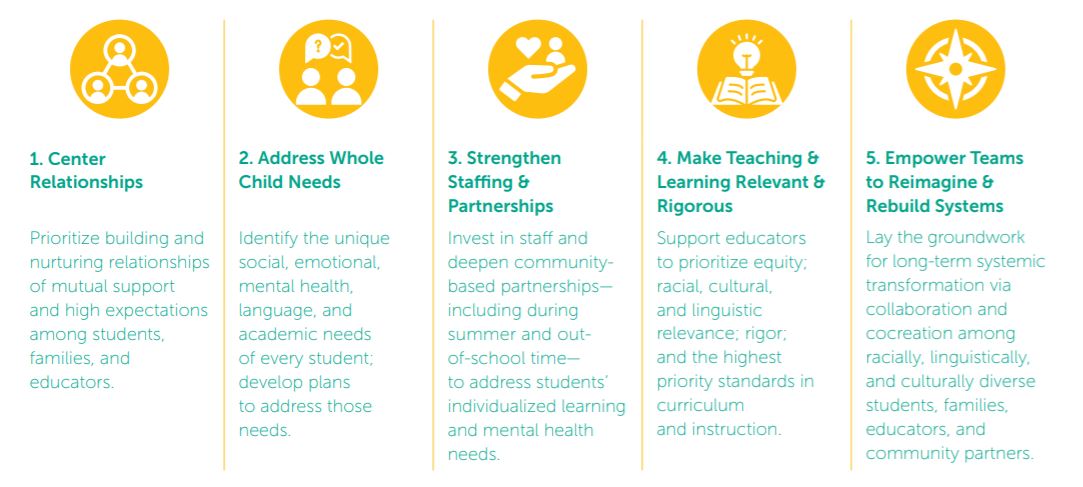
The pandemic and our nation’s reckoning on racial justice further exposed systemic inequities in our education system. The impact has been particularly devastating on students of color, students from low-income families, English learners, youth in foster care, students experiencing housing insecurity, students with disabilities, and other marginalized children and youth. Educators also experienced greater stress and burnout.
The pandemic altered our understanding of how schools could and should operate as well. Now, as we return for a new school year and districts are poised to receive a major infusion of federal and state funding, we have an opportunity to make real change.
We know we can’t go back to “normal” because the pre-pandemic normal was not working for all students. Instead, we should build toward an education system that places equity at the center so that all students have the support and opportunities they need to achieve their potential.

CTA has joined a coalition of education and community groups that is reimagining California schools and districts with this goal. The whole-student approach includes centering relationships, strengthening educators, advancing a robust curriculum and empowering school teams.
Rebuilding and recovery must begin by nurturing students’ and educators’ social and emotional well-being to support academic progress. But it should go farther by reimagining the very systems in which students learn. This includes strengthening the foundation of our education system and all child- and family-facing systems to eradicate systemic racial and other inequities; to build trust between and among students, families, educators, administrators and leaders; and to strengthen systems for continuous improvement.
Long-term systemic transformation can happen when our schools are restorative places — where students feel safe, known, supported and fully engaged in learning.
A big idea proposed by the coalition is a bold move districts can make in the coming months:
A Restorative Restart
Every California district should take six weeks to offer students, families and educators a restorative restart. During this time, district and school leaders and staff should prioritize these five practices and then continue to expand them year-round:
- Center Relationships
- Address Whole Child Needs
- Strengthen Staffing and Partnerships
- Make Teaching and Learning Relevant and Rigorous
- Empower Teams to Reimagine and Rebuild Systems
Read more at reimaginecaschools.org.

Other stories in this special section on Ways to Wellness:
FOR YOU
- Back on track – expert tips on creating a stronger, healthier you
- Compassion fatigue – setting up a structure and systems to help individuals
- SEL for you, too – Social-emotional learning for educators
FOR YOUR STUDENTS
- Movement matters – PE teachers’ plans to get students into tip-top shape
- Conditions to thrive – School counselors, educators on easing kids back into routine
The Discussion 0 comments Post a Comment